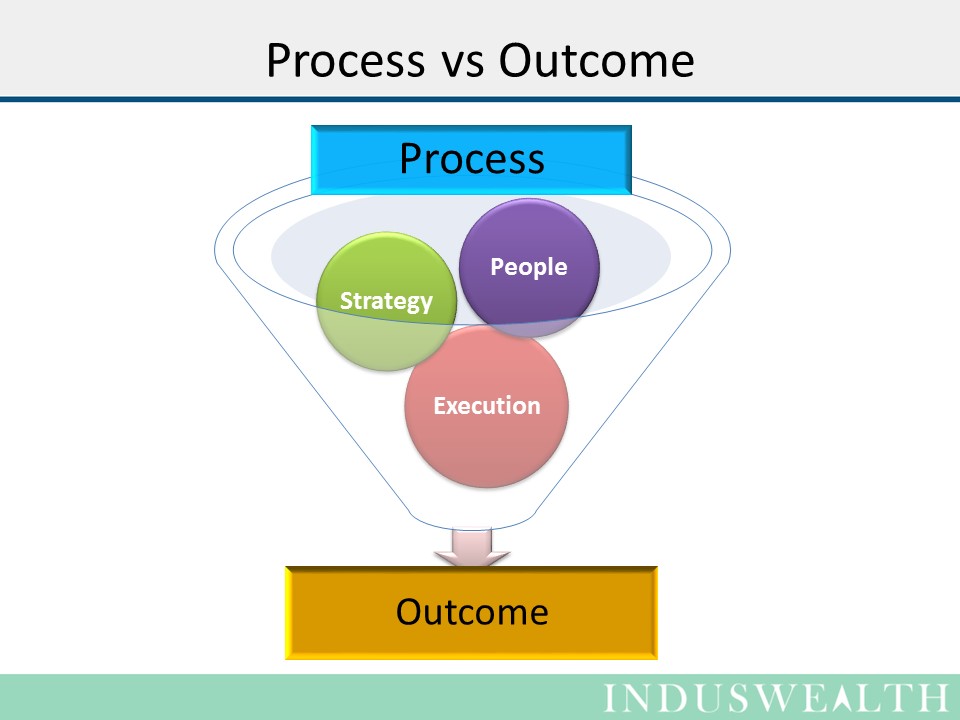As we absorb the spirit of Olympics and witness some of the best compete, this a great time to analyze various teams approach to process and outcomes.
In sport the ultimate goal is to win, but teams and individuals who focus on the final outcome don’t seem do as well as the ones that focus on the process of performing well and continually improving their performance.
Focusing too much on outcome could push people to take shortcuts and cheat. Focusing on the process could make one enjoy practice sessions as much or more than the competition and enable one deliver their best in the competition.
A good process should be able to
- Capture the essence of the game (break the game down to its key components)
- Identify core strengths of the team
- Identify an approach that will make sure the key strengths of the team are leveraged to give it their best chance for a favorable outcome
When Srilanka won the cricket world cup they “pioneered” pinch hitting in the first 15 overs – they leveraged component (first 15 overs) that was not being exploited by others. This was the time when Sanath Jayasurya was promoted from middle order to the top. While Ranatunga and Aravinda de Silva were there to stabilize and carry on the momentum. This approach won them the 1996 worldcup.
Australian cricket’s approach is one of the best examples of a process oriented approach to sport. They have a very structured approach to identifying and nurturing talent, they have an organized approach to their game, and they try to win the game even if a draw is a satisfactory outcome for most. I believe their robust process and execution can explain their consistent performance over the years.
West Indies, Pakistan, and India (till things changed recently (?)) – had good players but they never had a process oriented approach to their game. They did win some games, but that was always on the back of an “inspired” performance that was difficult to replicate on a consistent basis.
Having a good process does not guarantee a win every time, but can greatly increase the odds of winning and help the team punch above its weight. Teams with excellent processes can use the outcomes of various aspects of the game as feedback/input to improve their process and continually become better.
The same principles apply to investing. Final outcome for investing is to make money. We can find that successful investors have taken different routes, but each one had a process oriented approach to their investing and worked to hone their process to get their edge.
- Ben Graham took an approach of buying undervalued stocks by looking for companies that were selling below their book value. He spent a lot of time identifying companies that were selling below the book value by going thorough lots of paper. He did rigorous analysis of the value and purchased only if it met his criteria.
- Warren Buffett – took a value & growth oriented approach where he looked for great companies selling at a reasonable price. Buffet has a framework to value the companies, he has been extremely patient in waiting for suitable opportunities and when opportunities came he invested significant amounts.
- Jim Simons (renaissance technologies) took technical approach and found patterns in stock price trends that he could exploit. Jim himself is great mathematician and he also hired the best scientists to identify patterns and made billions.
The same applies to various other successful investors as well. There are able to
- Identify various aspects of finding an edge in the markets
- Identify aspects they can successfully exploit and have a well defined process to do it
- Continually update their processes so that they retain their edge.
Boiling all this down to specific actions for investors
- Identify your “Investment Philosophy” – One should identify a strategy/insight/approach that gives an edge over others. There should be at least a small differentiating factor that creates an edge. If one is being a “me-too” player – then expecting above average returns may not be prudent.
- Back test this approach with historical market data to validate
- Develop a “process” to implement the philosophy – this should help one make the buy and sell decisions
- Implement the process in a gradual manner and collect data about the outcomes. The more iterations one does, the richer is the information. This may take a long time but then “Rome was not built in a day”
- Analyze the data collected to improve the process and may be even update the philosophy
This seems like a time consuming and tedious process – and I can guarantee that it is. It is definitely not a get rich quick & easy approach – but I can also say that the results could be reasonably satisfactory.
Happy investing….
